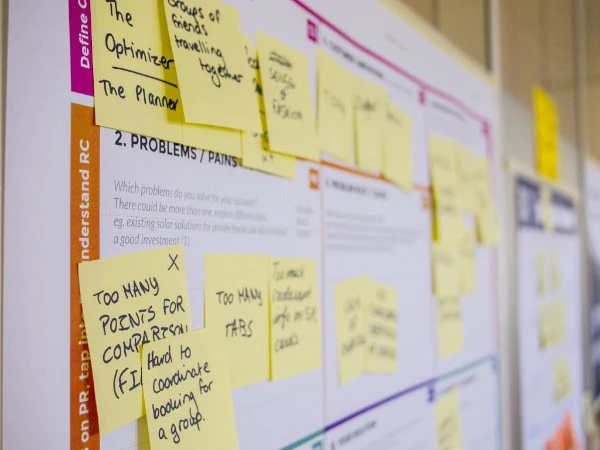Burial Insurance With No Waiting Period is a type of life insurance that pays a small death benefit to cover funeral expenses. It’s typically sold to seniors who don’t qualify for traditional life insurance.
Unlike traditional whole life insurance, burial policies don’t require a medical exam and are guaranteed to be issued. This makes them a good option for people with poor health.

Burial insurance is a type of whole life insurance policy that provides a small death benefit to help beneficiaries pay for funeral expenses. It can also be used to pay off debt, such as credit card bills or mortgage loans. It is sometimes referred to as pre-need or funeral insurance, and is typically purchased through a funeral provider in advance of the insured’s death. It is less flexible than a traditional life insurance policy and does not offer discounts for good health.
Unlike other types of life insurance, burial insurance does not require a medical exam or ask many health-related questions. This makes it more accessible for seniors who have a preexisting condition or are in poor health, but who do not qualify for a traditional life insurance policy. It can be expensive, though, and the benefits are usually much lower than a traditional life insurance policy.
In addition to covering funeral costs, burial insurance may also cover expenses such as transportation from the funeral home to the burial site. Depending on the insurer and policy, it may also include embalming and other preparation fees for the body. In addition, some policies have a contestability period, which allows the company to examine claims for fraud or inaccuracies during the first two years of coverage.
Whether burial insurance is worth it depends on a variety of factors, including your health and why you want a life insurance policy. If you need a significant amount of money to cover your mortgage or provide income replacement, a traditional life insurance policy is probably a better choice. Nonetheless, burial insurance offers an affordable way to secure a small death benefit and help your loved ones pay for your end-of-life expenses.
It’s a type of final expense insurance
Burial insurance is a type of life insurance that is meant to cover final expenses. It does not require a medical exam and is often sold to people who can’t qualify for traditional life insurance policies due to poor health or limited income. While it can be helpful for some, other consumers may find a more comprehensive life insurance policy to be better suited to their needs.
Burial or funeral expense insurance is typically whole life insurance and offers a low face amount of coverage. Its benefits can be used to pay for funeral services, a casket or urn, headstone, and other end-of-life expenses. In addition, a beneficiary can use the proceeds to pay off outstanding debts. These types of expenses can add up quickly after someone passes away, and burial insurance can help to lessen the financial burden on loved ones.
Another type of burial insurance is pre-need insurance, which allows you to prepay for your funeral and other arrangements in advance. This can save money and time, since a funeral home will be aware of your wishes. However, the downside of this type of insurance is that it limits your options. It can also be difficult to change a pre-need arrangement once you’ve signed up for it.
Both kinds of burial insurance have their pros and cons. Generally, burial insurance is easier to obtain than life insurance because it does not require a medical exam or ask many health-related questions. However, it is important to shop around and compare different companies before making a decision. Some burial insurance policies may be more expensive than others, but it’s worth the extra effort to get a plan that meets your needs.
It’s a type of permanent life insurance
Burial insurance, also known as final expense life insurance, is a type of permanent life insurance that provides a small death benefit to cover funeral expenses. It is typically sold to seniors with tight budgets who may not have other life insurance or savings to pay for their final expenses. Burial insurance is less expensive than other types of life insurance, such as whole or term policies. Premiums are typically paid weekly or monthly and are based on the insured’s age, gender, and size of death benefit.
Most burial insurance policies offer a small death benefit, usually between $5,000 and $25,000. They are easy to get approved for because they do not require a medical exam or health questions. Some policies, called simplified issue, are available to people with serious health conditions. Others, called guaranteed issue, are available to anyone between the ages of 50 and 85.
Burial insurance is a good choice for people who need a small death benefit to cover funeral and other modest expenses. However, it’s not a good option for those who want to cover larger expenses or need substantial coverage. It may be worth looking into other types of life insurance, such as a traditional whole life policy, which offers a larger death benefit and higher cash value growth. Another option is to purchase a term life insurance policy, which has an expiration date and is easier to qualify for than a burial insurance policy. But it’s important to understand the differences between these different options before choosing one. Whether or not a burial insurance policy is right for you depends on your needs, your health, and your reasons for wanting a life insurance policy.
It’s a type of simplified issue life insurance
Burial insurance, also known as funeral or final expense insurance, is a type of whole life insurance that can cover your funeral and end-of-life expenses. It is a flexible policy that can be tailored to your specific needs, and it does not require a medical exam. It is available to those who cannot get traditional life insurance because of their health. It can also cover other expenses that arise after death, including debts.
It is important to compare burial insurance with other options, such as term and whole life policies. A burial policy is usually much cheaper than a regular life insurance policy, but it may not offer as many benefits or a higher face amount. For example, it may not cover mortgage loans or personal debt. It is also not a good idea to purchase burial insurance if you are not sure how long you will live.
The most important factor in determining if burial insurance is right for you is the level of coverage you need. It is recommended to choose a plan that covers the cost of your funeral and other expenses, such as burial or cremation costs, headstones, flowers, transportation, and obituary notices. Some insurers offer additional features such as guaranteed acceptance or a short waiting period, which can make it easier to get coverage.
Simplified issue and guaranteed-issue burial insurance do not require a medical exam, so you can typically apply for them within minutes. However, you should note that the insurer will evaluate your health based on a series of questions. You should be aware that pre-existing conditions, smoking, and risky activities can affect your eligibility.
Burial insurance is a great option for people who want to ensure that their loved ones have the money they need after their death. But if you can afford a more robust life insurance policy, it is better to buy a traditional policy. A more robust policy can help your family cover other expenses, such as replacing income or paying off debts, and it can also pay for college tuition.
It’s a type of guaranteed issue life insurance
Burial insurance, also known as final expense insurance or funeral insurance, is a small whole life policy designed to cover end-of-life expenses. It’s typically available for people between the ages of 50 and 85, and doesn’t require a medical exam. Depending on the type of policy, even those with pre-existing conditions can qualify. It’s a great option for those with health issues or who don’t qualify for other types of life insurance.
Unlike traditional whole life policies, burial insurance doesn’t include a cash value component. Instead, the insurer will typically provide a graded death benefit during the first two or three years of the policy. This means that if the insured passes away within this period, the beneficiary will only receive a refund of the premiums paid.
Simplified issue or guaranteed-issue burial insurance may not ask many health-related questions, but it can be more expensive than other life insurance policies. In addition, the coverage amounts are typically lower than those of other life insurance policies. This makes it difficult to compare the price and benefits of different policies.
Some companies offer burial insurance through their existing life insurance policies, while others sell it as a separate product. In either case, it’s important to determine how much you can afford to pay per year for a small policy before deciding whether to purchase one. Then, consider a more comprehensive policy that can help you with end-of-life costs.




